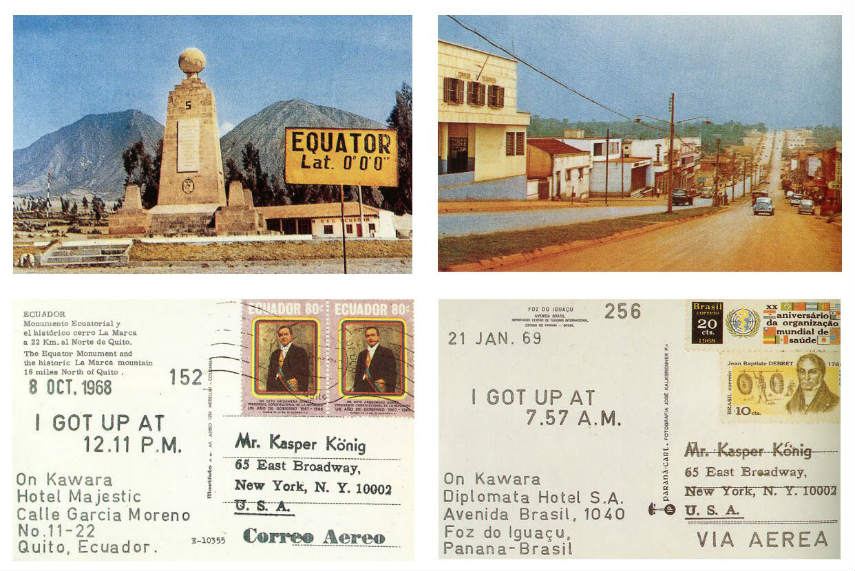On Kawara (1932-2014) was a Japanese conceptual artist who lived in New York City from 1965.
“Kawara belonged to a broadly international generation of Conceptual artists that began to emerge in the mid-1960s, stripping art of personal emotion, reducing it to nearly pure information or idea and greatly playing down the art object. Along with Lawrence Weiner, Joseph Kosuth, Hanne Darboven and others, Kawara gave special prominence to language.” (source: wikipedia)
I don’t want to strip art of personal emotion, quite the contrary, intensity of emotion is imporant to me. But like the conceptual artists mentioned above, in my current project, I am presenting information and I am playing down the art object. I am interested in the ephemerality of news headlines. Text does appear often in my work.
I am interested in Kawara’s work because of his use of repetition and engagement in routine/ritual and process-oriented projects that span long periods of time. Although his work is minimalist, the postcard series feel personal and impersonal at the same time.

I am most drawn to On Kawara’s postcard series:
“… include[s] the I Went and I Met series of postcards sent to his friends detailing aspects of his life, and a series of telegrams sent to various people bearing the message “I AM STILL ALIVE”. Between 1968 and 1979, On Kawara created his information series, I Got Up, in which he sent two picture postcards from his location on that morning. All of the 1,500 cards list the artist’s time of getting up, the date, the place of residence and the name and address of the receiver another series of postcards, I Got Up At, rubber-stamped with the time he got up that morning. The length of each correspondence ranged from a single card to hundreds sent consecutively over a period of months; the gesture’s repetitive nature is counterbalanced by the artist’s peripatetic global wanderings and exceedingly irregular hours (in 1973 alone he sent postcards from twenty-eight cities).” (source: wikipedia)
More on On Kawara on theartstory.org.
